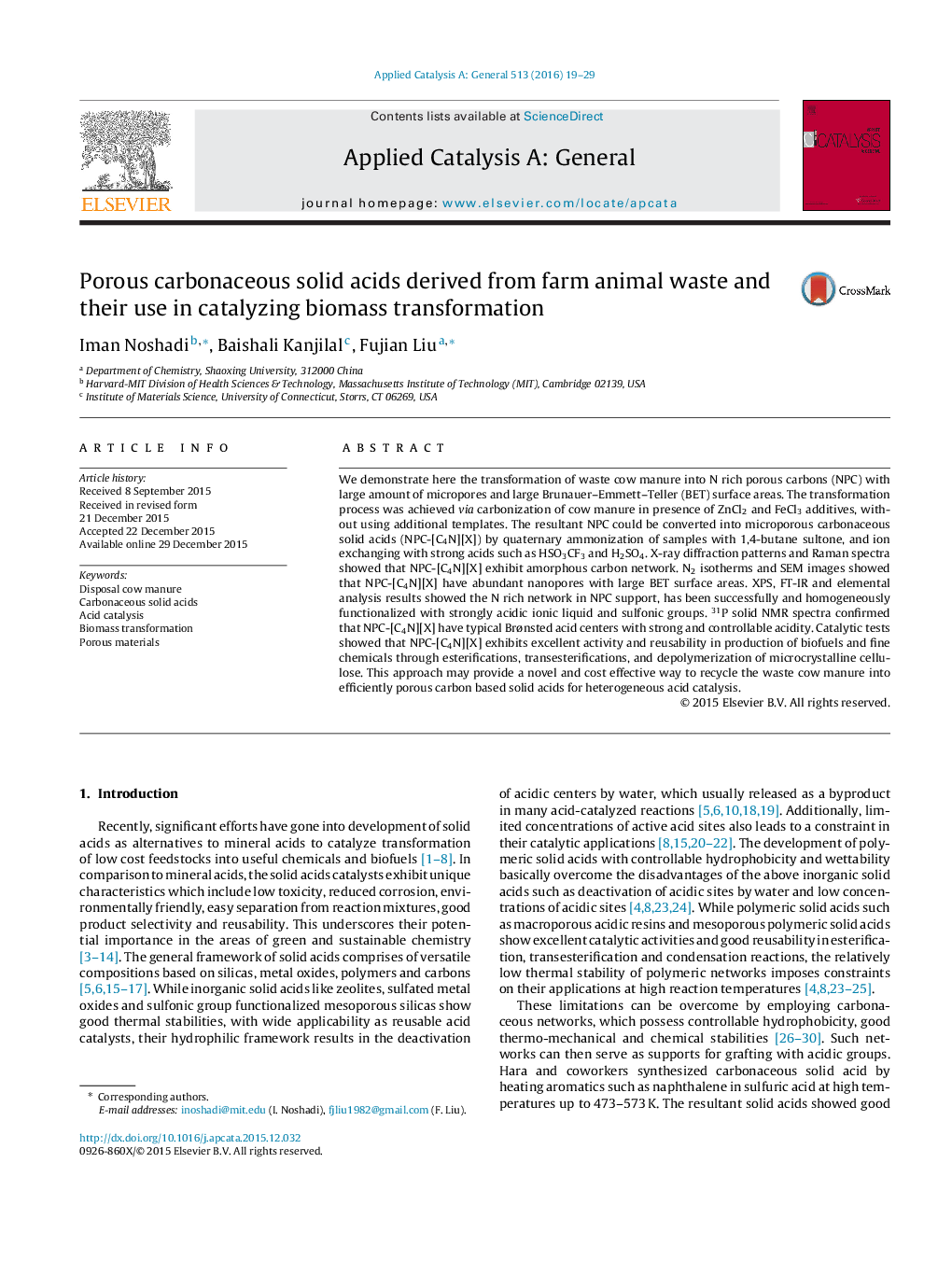| کد مقاله | کد نشریه | سال انتشار | مقاله انگلیسی | نسخه تمام متن |
|---|---|---|---|---|
| 38841 | 45793 | 2016 | 11 صفحه PDF | دانلود رایگان |
• Farm animal waste acted as carbon source to the synthesis of N rich porous carbon (NPC).
• NPC acted as efficient and stable support for grafting with various acid sites (NPC-[C4N][X]).
• NPC-[C4N][X] showed abundant micropores, good stability and controllable acid centers.
• NPC-[C4N][X] showed good activities and reusability for catalyzing biomass transformations.
We demonstrate here the transformation of waste cow manure into N rich porous carbons (NPC) with large amount of micropores and large Brunauer–Emmett–Teller (BET) surface areas. The transformation process was achieved via carbonization of cow manure in presence of ZnCl2 and FeCl3 additives, without using additional templates. The resultant NPC could be converted into microporous carbonaceous solid acids (NPC-[C4N][X]) by quaternary ammonization of samples with 1,4-butane sultone, and ion exchanging with strong acids such as HSO3CF3 and H2SO4. X-ray diffraction patterns and Raman spectra showed that NPC-[C4N][X] exhibit amorphous carbon network. N2 isotherms and SEM images showed that NPC-[C4N][X] have abundant nanopores with large BET surface areas. XPS, FT-IR and elemental analysis results showed the N rich network in NPC support, has been successfully and homogeneously functionalized with strongly acidic ionic liquid and sulfonic groups. 31P solid NMR spectra confirmed that NPC-[C4N][X] have typical Brønsted acid centers with strong and controllable acidity. Catalytic tests showed that NPC-[C4N][X] exhibits excellent activity and reusability in production of biofuels and fine chemicals through esterifications, transesterifications, and depolymerization of microcrystalline cellulose. This approach may provide a novel and cost effective way to recycle the waste cow manure into efficiently porous carbon based solid acids for heterogeneous acid catalysis.
Figure optionsDownload high-quality image (179 K)Download as PowerPoint slide
Journal: Applied Catalysis A: General - Volume 513, 5 March 2016, Pages 19–29
